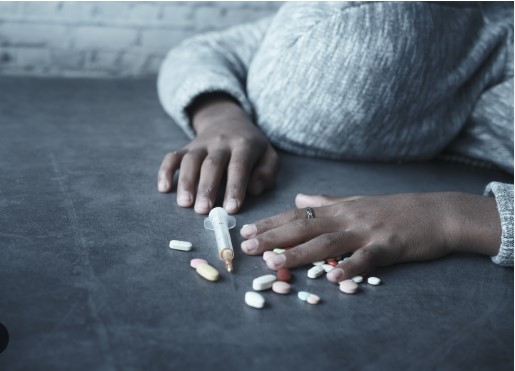Drug Abuse and Its Health Implications Among Secondary Students in Nigeria
Drug abuse among secondary students in Nigeria is a pressing issue with significant health implications. The misuse of drugs among young people not only poses immediate health risks but also jeopardizes their long-term well-being and future prospects. Understanding the factors driving this problem and its consequences is crucial for effective intervention and prevention efforts.

Prevalence and Patterns of Drug Abuse
Drug abuse among secondary students in Nigeria is a growing concern. Adolescents are particularly vulnerable due to factors such as peer pressure, curiosity, stress, and a lack of parental supervision. Commonly abused substances include alcohol, tobacco, cannabis (marijuana), prescription medications, and illicit drugs like cocaine and heroin.
The patterns of drug abuse often vary by region and socio-economic background. In urban areas, students may have easier access to drugs due to a denser network of suppliers and less stringent enforcement of drug laws which could make them engage more it. Additionally, cultural influences and media portrayal of substance use can contribute to normalization and acceptance of drug abuse among young people.
Health Implications of Drug Abuse
The health consequences of drug abuse among secondary students are severe and multifaceted:
- Physical Health: Drug abuse can lead to a range of physical health problems, including respiratory issues, cardiovascular complications, liver damage, and increased susceptibility to infections. Injecting drugs also raises the risk of contracting blood-borne diseases like HIV/AIDS and hepatitis.
- Mental Health: Substance abuse is closely linked to mental health disorders such as depression, anxiety, and psychosis. Prolonged drug use can alter brain chemistry, impair cognitive function, and increase the risk of developing addiction or substance dependence.
- Academic Performance: Drug abuse negatively impacts academic performance and educational outcomes. Students who abuse drugs are more likely to skip classes, perform poorly in exams, and eventually drop out of school. This not only affects their personal development but also undermines their future prospects.
- Social Consequences: Drug abuse can strain relationships with family and friends, leading to social isolation and withdrawal. It can also increase the likelihood of engaging in risky behaviors such as violence, crime, and unprotected sexual activity, further exacerbating health risks.
Factors Contributing to Drug Abuse
Several factors contribute to drug abuse among secondary students in Nigeria and these includes:
- Peer Pressure: Adolescents may experiment with drugs to fit in with peer groups or to seek acceptance and validation from their peers.
- Curiosity: Young people may be curious about the effects of drugs and may try them out of sheer curiosity.
- Stress and Coping Mechanisms: Academic pressures, family issues, or personal problems can drive students to seek solace in drugs as a way to cope with stress and emotional turmoil.
- Accessibility and Availability: Easy access to drugs due to inadequate law enforcement or lax regulations can facilitate drug abuse among students.
- Family Dynamics: Dysfunctional family environments, parental substance abuse, or lack of parental supervision can contribute to a higher risk of drug experimentation among adolescents.
Addressing Drug Abuse Among Secondary Students
To combat drug abuse among secondary students in Nigeria, a comprehensive and multi-sectoral approach is needed which are:
- Education and Awareness: Schools should implement drug education programs that raise awareness about the risks and consequences of substance abuse. Students should be equipped with life skills to resist peer pressure and make informed decisions.
- Parental Involvement: Parents play a crucial role in preventing drug abuse among their children. They should maintain open communication, provide positive role modeling, and monitor their children’s activities.
- Community Support: Community-based interventions, including youth clubs, peer mentoring programs, and recreational activities, can provide positive alternatives to drug use and foster a sense of belonging among adolescents.
- Policy and Enforcement: Strengthening drug control policies and enforcing regulations is essential to limit access to illicit substances. Law enforcement agencies should collaborate with schools and communities to combat drug trafficking and distribution.
- Access to Treatment: For students already struggling with drug abuse, access to confidential and non-judgmental treatment services is vital. Rehabilitation programs should address both the physical and psychological aspects of addiction.
Role of Healthcare Professionals
Healthcare professionals, including doctors, nurses, and counselors, play a crucial role in addressing drug abuse among secondary students:
- Screening and Early Intervention: Healthcare providers can conduct screenings for substance abuse and provide early intervention and counseling for at-risk students.
- Treatment and Rehabilitation: Medical professionals can provide medical detoxification, counseling, and rehabilitation services for students struggling with substance abuse disorders.
- Education and Advocacy: Healthcare professionals can educate the community about the health risks of drug abuse and advocate for policies that promote substance abuse prevention and treatment.
Challenges and Barriers
Despite the efforts to battle the drug abuse among secondary students, there are several challenges and barriers persist, which includes;
- Stigma: There is a stigma associated with drug abuse, which may prevent students and families from seeking help or accessing treatment services.
- Limited Resources: Inadequate funding, lack of trained personnel, and limited access to treatment facilities pose significant challenges to addressing drug abuse effectively.
- Cultural Norms: Cultural beliefs and attitudes towards substance use may influence acceptance and perpetuation of drug abuse behaviors.
- Drug Trafficking and Availability: The illicit drug trade and easy availability of drugs pose ongoing challenges to prevention efforts.
Conclusion
The drug abuse among secondary students in Nigeria is a complex public health issue with far-reaching consequences. Addressing this problem requires a multi-faceted approach that involves schools, families, communities, healthcare professionals, and policymakers. By investing in prevention, education, treatment, and enforcement measures, we can protect the health and well-being of our youth and build a healthier future for our nation. Efforts to combat drug abuse must be comprehensive, evidence-based, and tailored to the unique needs and challenges faced by adolescents in Nigeria. Together, we can create a supportive environment that empowers young people to make healthy choices and thrive.